The Frost Waits for No One
Digital card games are all the rage these days. While physical games like Magic the Gathering and Yu-Gi-Oh! are still alive and well, more and more card games are making the transition to the world of video games. From competitive games like Hearthstone and The Elder Scrolls: Legends to single-player experiences like Slay the Spire and The Witcher 3’s “Gwent,” video games are providing more ways to interact with cards than ever before. Throw in the portability of phones, tablets, and handhelds, and there’s never been a better time to explore the genre.
Frost, developed by the Paris-based Le Studio des Ténèbres and published by Digerati Distribution, is an interesting addition to the digital card game space. Initially released on Steam, iOS, and Android in 2016, Frost has arrived on Xbox One, PlayStation 4, and Nintendo Switch at the modest retail price of $12.99. A solely single-player experience, Frost brings some unique ideas to the PvE sub-genre, as the player works to escape an ever-persistent and incoming “Frost” while navigating a cold and harsh tundra.
With its pick-up-and-play nature and impressive from-scratch mechanics, Frost offers a unique experience at a relatively inexpensive price point. Unfortunately, a poorly communicated tutorial and heavy reliance on RNG makes Frost an often unforgiving and inaccessible game for its audience. Even in moments when it is obtuse, however, Frost provides a solid enough hook to warrant a purchase, especially for Switch owners hankering for a challenging and methodical game to play in short bursts.

Seeking Refuge
Frost doesn’t hold the player’s hand. Outside of a brief tutorial and an introductory cinematic, the game leaves the player to figure out its story and mechanics for his or herself.
The premise is simple: as a member of a group of settlers, the player must work to escape the oncoming Frost, combating threats like hunger, vicious animals, and fatigue, in order to reach a sanctuary free from the cold known as the Refuge.
Players start out with a pre-made deck comprised of four main card types: humans, apples, logs, and fatigue. From there, players are thrust into the experience. Each game of Frost is divided into turns, and the player spends each turn doing one or more of several actions: spending resources, scavenging for resources, buying “Idea” cards, participating in an “Event,” or resting.
Spending resources is the overall goal. By providing a set number of materials from your hand—for example, two apples, two logs, and one human—players can travel to a new “Region,” increasing the Frost counter by one and delaying the oncoming Frost by an additional turn; by traveling a pre-determined number of times, players reach the Refuge, resulting in a victory screen. The player also has a tally in the lower left-hand corner which denotes how many of each material the player has in his/her hand or deck. After spending resources, cards are sent to the discard pile, where they are re-shuffled and re-drawn during future turns.
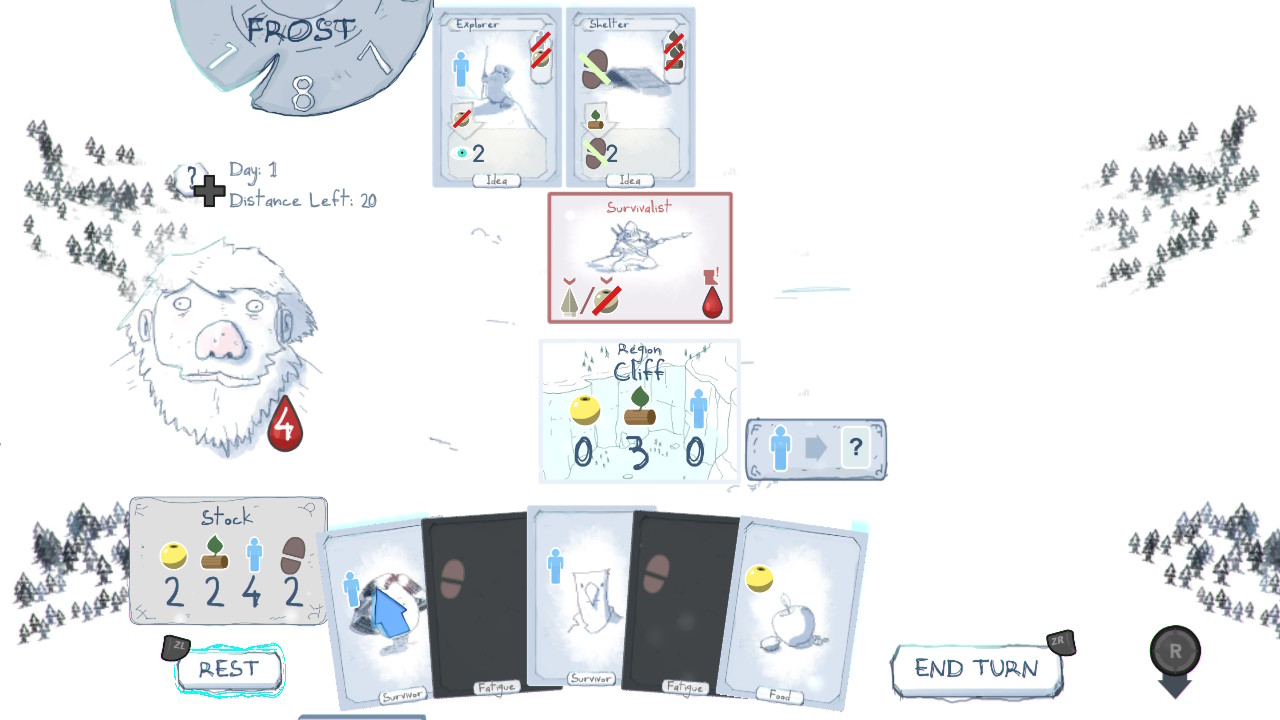
Players can acquire new resources either by sending a human out to scavenge, buying new cards, or completing Events. Scavenging costs one human card, and can result in players gaining a new apple, log, or human card to add to their hand… but can also result in players receiving a dead card in the form of a fatigue card. Buying Idea cards, meanwhile, requires players to pay certain resources in order to add a powerful new card to their hand. The game also has certain Event objectives based on the current Region—such as the Campsite event, which gives a 50% of adding a log card to your hand for each human resource you spend—and meeting these objectives can allow players to gain useful new materials to help them advance.
Unlike spending resources, however, scavenging, buying cards, and utilizing Events all have an important caveat; doing so often requires removing cards entirely from your deck. For example, purchasing the Plant Pot card, which has the ability to create an apple card upon use—requires the player first removing one apple card and two log cards to obtain it. The Farmers event, likewise, requires burning a human resource in order to gain two apple cards. And while scavenging oftentimes comes at no extra cost to the player, a bad excursion can result in a human’s death, removing them permanently from your tally and deck.
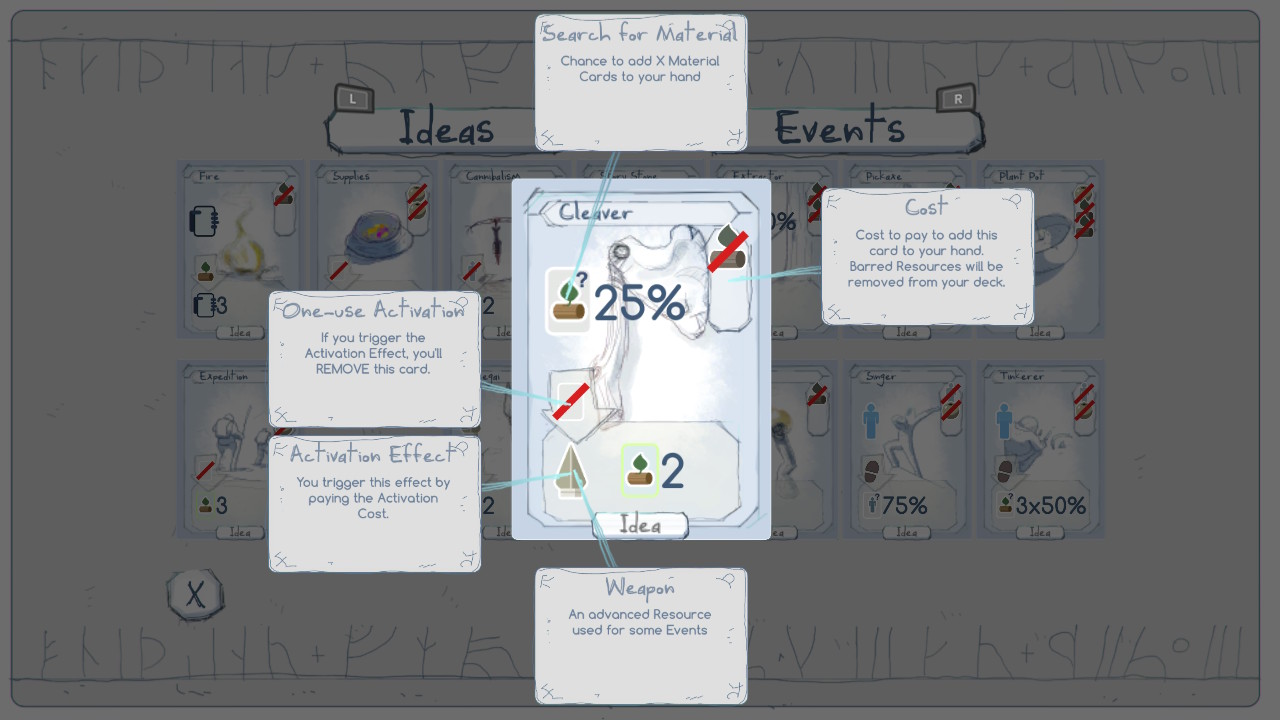
Of course, these high-risk scenarios come with high rewards. The Plant Pot card, for instance, becomes an incredible asset once acquired, as it cannot be burned, and will always produce a new apple card when drawn and used—essentially creating an endless loop of apple production. At the same time, however, the game will constantly throw wrenches in the mix; negative Events, such as “Wolf” or “Cannibals,” will deal damage to the player when traveling to a new Region unless dealt with—usually with a weapon card, but occasionally with food or other resources. Players will also accrue fatigue cards when scavenging or using certain Idea cards; players can only rid themselves of fatigue by resting, which eats up an entire turn and brings them one step closer to a Game Over screen.
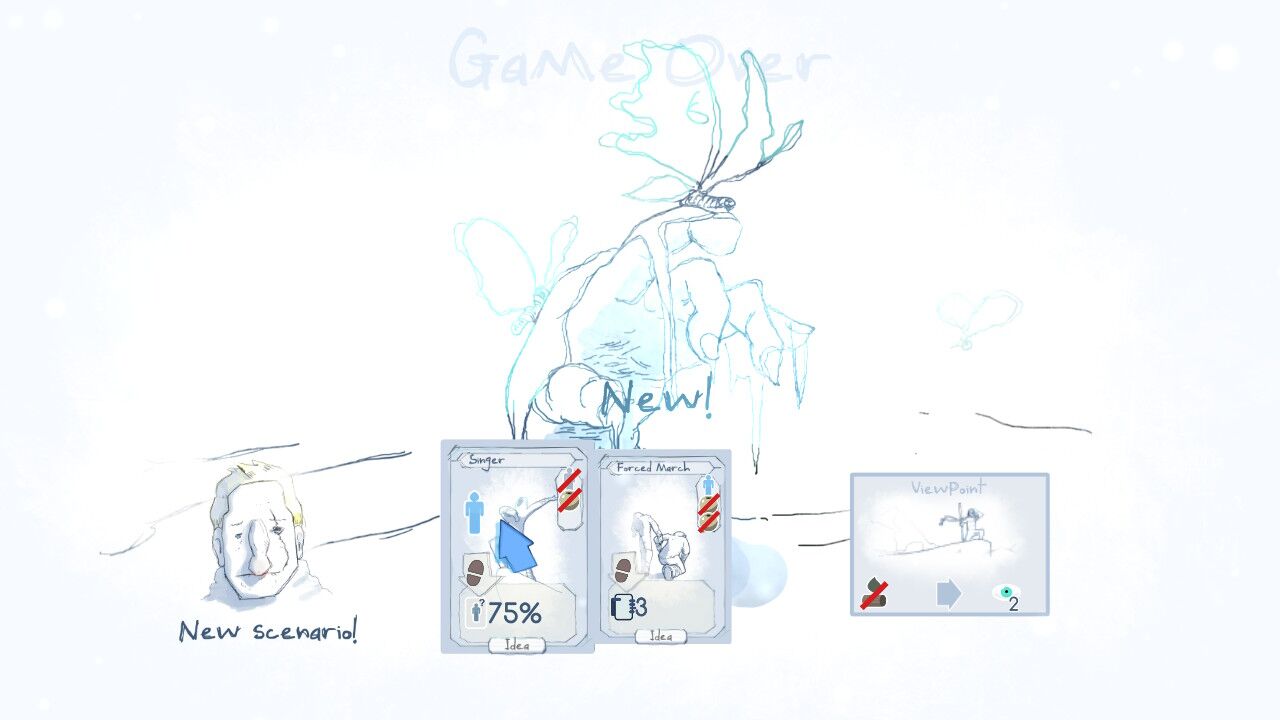
The Bitter Cold
It is in exploiting these powerful cards and managing basic resources, all while staving off fatigue and dangerous foes, that Frost carves out a truly interesting niche for itself. The game balances a lot of different mechanics on its shoulders during any given game, and wading through the minutia of every Idea card interaction and Event situation is part of the fun of playing Frost.
At the same time, however, I couldn’t help but feel overwhelmed by all of this. As you can tell from my lengthy explanation of the game rules, there’s a lot going on here, and that’s without me going into detail about pet cards, cards with multi-uses, or the always-looming “Terror” cards that can end games in an instant. While the game starts off with a steep learning curve, things only get steeper from there, as Frost continually adds new Idea cards and Event scenarios to the game the more you play.
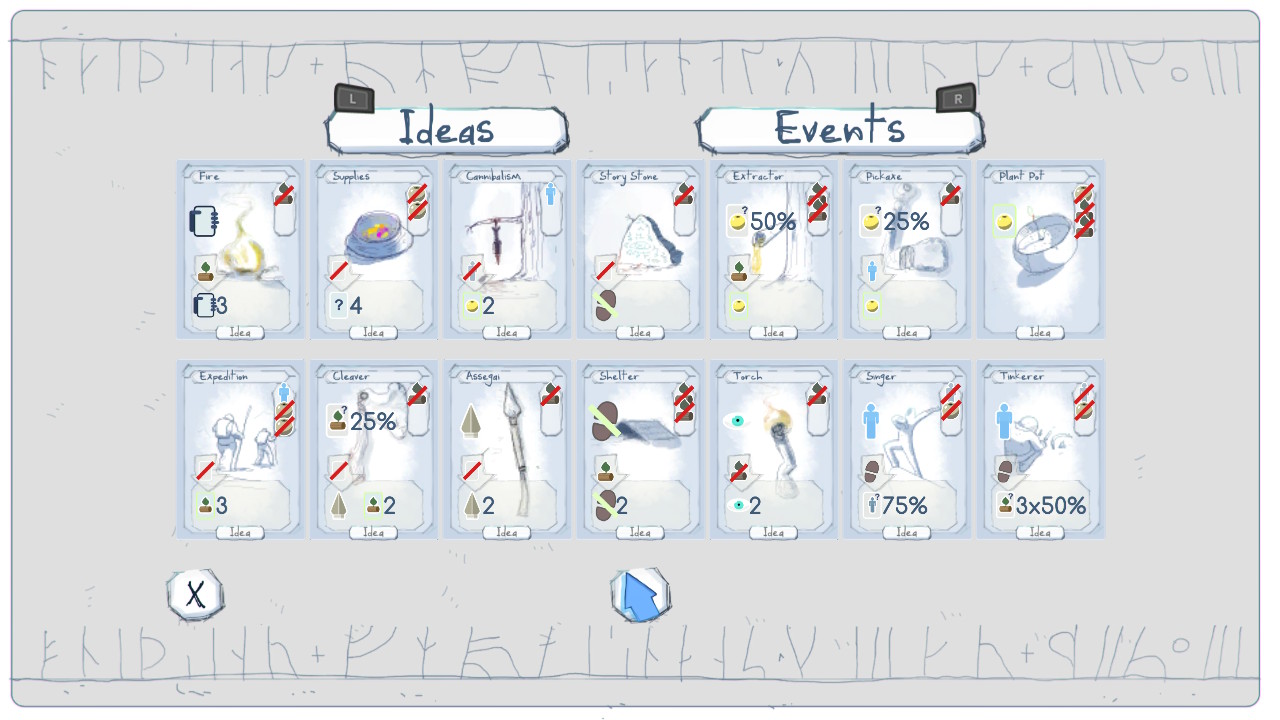
This can be particularly brutal when you consider that the game has over 50 different Idea cards and 25 Events that it continually doles out over time, each with their own nuanced strengths in weaknesses. Some cards, like the aforementioned Plant Pot, are absolute godsends that I’m always on the lookout for while traversing the wilderness. Others, like the far-more-useless Torch card, which burns a log resource to let players see a future Region or Event, can be just brutal to come across during particular runs. Throw in the fact that the addition of more and more cards only further dilutes the pool of particular cards you wish to see in a run, and Frost can all-too-often be a victim of classic card game RNG (randomness, for those unfamiliar with the term).
Though the game offers several difficulties for the base “Classic” mode, Frost starts difficult, and only gets more challenging the more time you put into it. Even the so-called “Easy” difficulty is more like “Hard” in any other modern video game. While the game includes a “Custom” difficulty option that allows players to tweak parameters like distance and number of objectives, it feels lacking; I would have loved to have been able to decide which specific Idea cards and Events were rotated into a given game, or at least limit them to a certain amount. Instead, the base game becomes a constant hurdle for those, like me, who are used to games being accessible and, let’s face it, a bit of a pushover.
A big part of the game feeling overwhelming is due to the game’s underwhelming tutorial. While the tutorial does a good job of communicating certain aspects of the game—namely, spending resources, passing turns, and win/loss conditions—the tutorial fails to explain many of Frost’s more complicated mechanics. The difference between burning and spending cards, for instance, was lost on me until I played through five or six games to get the hang of things for myself; meanwhile, other mechanics, especially those for cards introduced later while playing, are completely absent from the tutorial. Couple this with in an admittedly shoddy English translation, and it’d be easy for newcomers to feel lost in the opening hours of Frost.
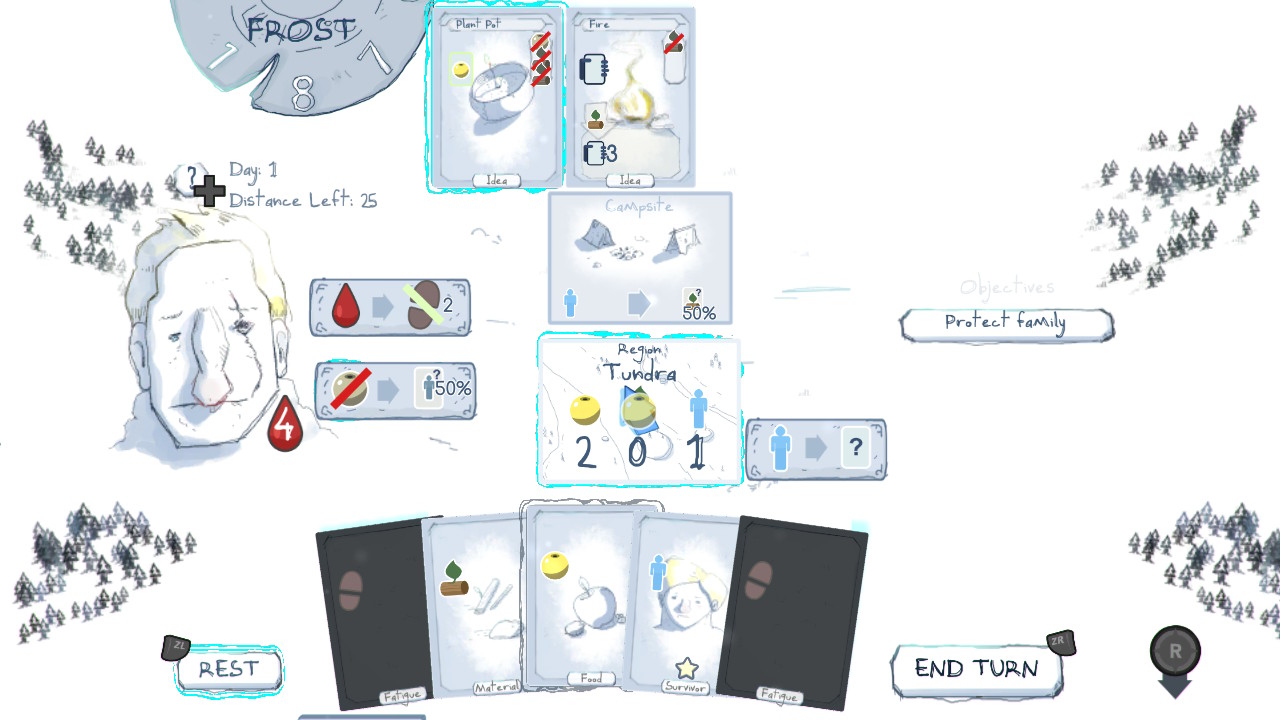
Feelings of Warmth
Thankfully though, Frost makes up for many of its stumbles by just being fun to play. Games often feel like a suped-up version of Solitaire, with the player battling him or herself in a complex match of skill, memory, and wit in order to come up victorious. When I was met with failure, I’d usually just shrug it off as I hopped into the next round, knowing that eventually I’d get good enough to eke out a win—even with the RNG gods seemingly against me. Even if the nomads I’m controlling are constantly suffering, for me, Frost feels quite tranquil.
A large part of Frost feeling strangely calming comes from its pick-up-and-go nature, at least for the Nintendo Switch version. Games tend to last anywhere from five to 20 minutes, and games can easily be saved mid-progress and picked up later on. Consider the fact that the game is only 13 bucks, and Frost becomes a worthy investment for those looking for something laid back to invest in when riding the bus to work or watching a baseball game from the couch.
Frost also offers a series of different “Scenarios” for those looking to change up the pace from the main game. Some, like the “Meditator” mode, simplify the game by eliminating the Frost counter completely, while others, like “Leader,” layer on additional objectives for players to complete on top of an already complex experience. While none of these scenarios serve to make the game explicitly less challenging, they provide welcome alternatives for those seeking a break from the main campaign.

Final Thoughts
Frost is a game that will please some and frustrate others. It’s a complex game with many moving parts, some of which work better than others. On the other hand, its a game that’s easy to pick up and play for twenty minutes, even when you’re getting your rumpus handed to you by the natural elements. At the end of the day, it’s $12.99—as my mother likes to say, “Hey! Where are you going?”
If you’ve exhausted yourself playing recent Hearthstone and The Elder Scrolls: Legends expansions, and are looking for something new to sink your teeth into, there aren’t many deck-building games quite like Frost. Who knows? Perhaps you’ll fare better than I did navigating the frozen tundra!
Score: 7.6/10
Have any good tips and strategies for Frost? Let your fellow readers (and me) know in the comments below!
David is the founder of The Punished Backlog. He has a problem finishing games he starts.
Just beat: Donkey Kong Bananza.
Working on: Hollow Knight: Silksong.
Can't wait for: Metroid Prime 4: Beyond.
Follow David on Twitter at @David_Silbert to keep up to date with all things The Punished Backlog.








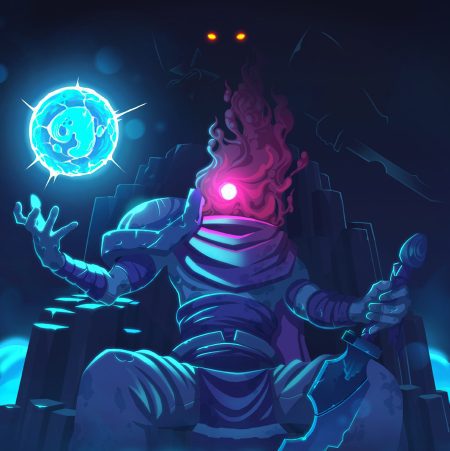
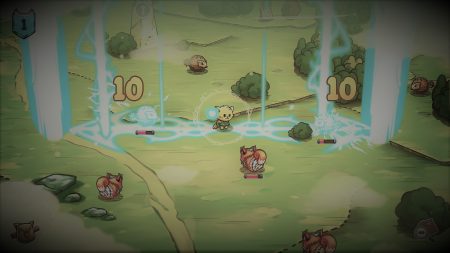
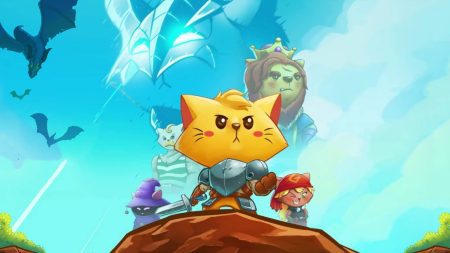
1 Comment
The best tip anyone can give is to avoid this game. Unless that is, you like having your ass handed to you about 1000 times before it lets you win once. And that’s not an exaggeration.